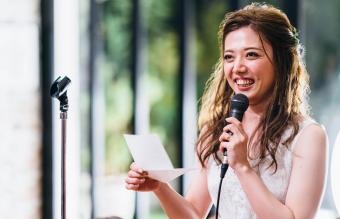
A popular Vietnamese wedding celebrates traditional customs. These traditions are observed before and after the wedding ceremony to include the engagement, wedding attire, and reception.
Traditional Vietnamese Wedding Customs
Vietnam is a country and a culture steeped in rich and colorful traditions. Located in the tropical region of Southeast Asia, Vietnam's vibrant art and clothing reflect the area's abundant natural resources and colors. Vietnam's history includes a variety of ruling cultures and countries, so its culture is complex. What is most important about traditional Vietnamese wedding customs however, is that family and tradition are paramount to all concerned.
Vietnamese Engagement Customs
The traditional Vietnamese wedding begins with the formal engagement of the bride and groom at the engagement ceremony. Traditionally, the engagement ceremony requires that representatives for both families "negotiate" the engagement with a formal proposal and gift exchange. Finally, the groom's representative formally asks for the bride-to-be's hand in marriage, presenting her with the engagement ring after her representative accepts the proposal on her behalf.
The Vietnamese engagement ceremony marks the beginning of the two families union as in-laws, and the bride and groom-to-be henceforth refer to their future in-laws as though they were already married. In the Vietnamese culture, the engagement is a solemn commitment to marry.
The Vietnamese Wedding Celebration
The Vietnamese culture places a high value on marriage, so the families and friends carefully orchestrate an elaborate, formal wedding ceremony that they expect to plan only once during the bride and groom's lifetime.
Before the Wedding
The families construct a frame made of coconut, palm, or banana leaves in front of each of their houses on the day before the wedding ceremony. At the top of this frame, they place a red board painted in yellow with the words, "Tan Hon" (meaning "just married") at the groom's house, and "Vu Quy" (which means, "leaving for her husband's house") at the bride's home.
The groom's family travels to the bride's home on the day of the wedding ceremony, and it is considered bad luck for them to be late. The families again exchange gifts of food, and the bride and groom worship at the "Alter of Ancestors."
Traditional Dress
Traditional Southeast Asian or Vietnamese dress for both the bride and groom consists of the customary "ao dai," which is a long silk tunic with split sides at the bottom over silk trousers. The bride adds an outer robe called an "ao choang" over the ao dai on her wedding day, and her entire outfit will be red or pink for good luck, and trimmed in gold embroidery. The bride also wears a cone-shaped hat known as "non la," or a saucer-shaped headpiece called "khanh vanh." Traditionally, the Vietnamese groom also wears a formal silk ao dai.
The Wedding
To seal their vows, the bride and groom exchange wedding rings. The groom also places earrings into the bride's ears and he fastens a necklace around her neck. The groom will offer his bride the most costly jewelry that he can afford to demonstrate his worthiness as a husband and breadwinner.
The families both endeavor to spend conspicuously on the entire traditional Vietnamese wedding celebration as a show of prestige to their friends and relatives, and as a sign of their respect to the newlyweds.
The traditional wedding day ends with a restaurant meal or dinner at the bride's house, with a live band and elaborate decorations and favors.
As their guests dine, the newly wedded couple mingles and receives well wishes, gifts, and money from their attendees. The couple then retires to the groom's home, or his family's home, as the bride now is considered to belong to the groom and his family.







